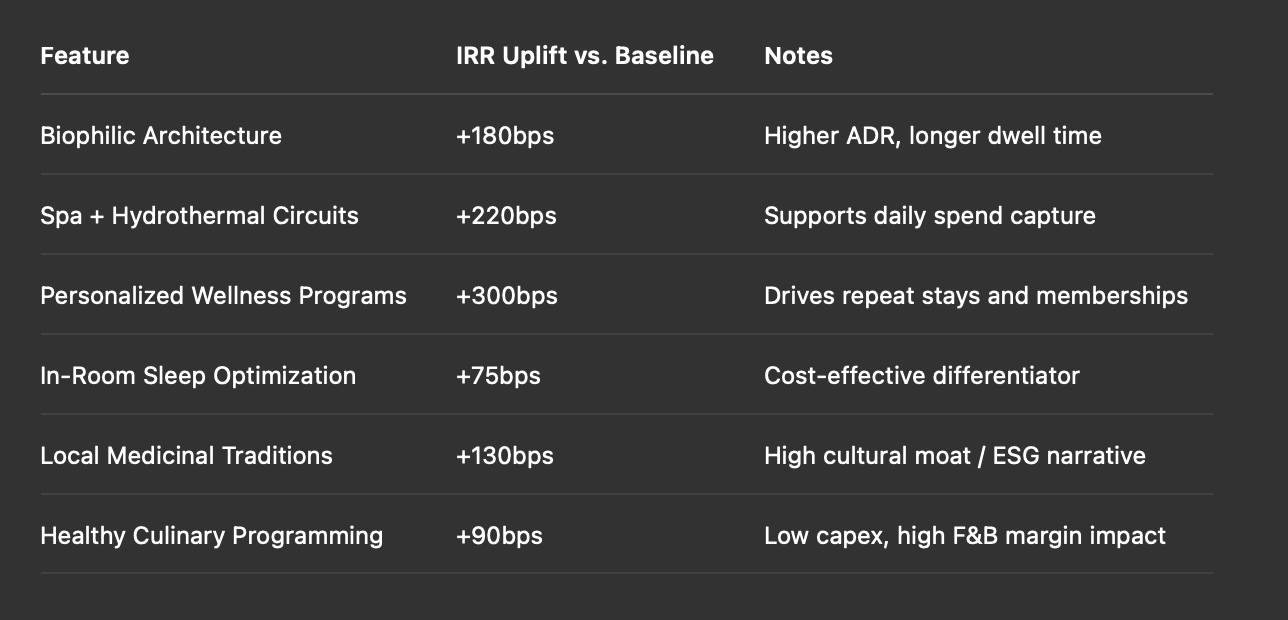At Bay Street, we have long contended that the next cycle of hospitality yield will emerge not from just branded flags or beachfront premiums, but from experiential distinction layered with scalable health-forward infrastructure. The wellness economy — now surpassing $6.3 trillion globally — is reframing the traditional cap rate conversations by injecting new dimensions of defensible revenue: personalization, permanence, and purpose.
The Dominican Republic, registering over 11 million tourist arrivals in 2024, provides a powerful backdrop for understanding this trend. But the core insight is not just the volume — it’s the intent. Travelers increasingly prioritize spiritual rejuvenation, longevity treatments, and full-sensory escapes over passive recreation.
Bay Street has been actively underwriting emerging operators in regions like Las Terrenas, Samana, and Punta Cana who are embedding biophilic architecture, hydrotherapy zones, and Ayurvedic diagnostics into their wellness programming — not as add-ons, but as central revenue engines. As Colon’s article rightly notes, wellness properties now enjoy 35% to 450% higher RevPAR than traditional peers.
We have also met with several prominent art families in the region — including the De León and Alzamora collectives — interested in licensing sacred Caribbean iconography, botanical-themed art, and postcolonial installation pieces to operators building wellness-anchored properties. As Art Collecting Today puts it, “aesthetics are not accessories — they are environments that inform healing and identity.”
From a quantamental lens, we’ve built a scoring rubric to assess the IRR delta between traditional asset upgrades (e.g., FFE refresh, brand alignment) and wellness-native enhancements (e.g., salt therapy, personalized sleep tech, IV infusion rooms). Below is a sample impact matrix from recent modeling:

As the book Management of Art Galleries notes, “Programmatic depth — not just space — creates lasting engagement.” The same applies in hospitality: depth of wellness offering builds emotional equity, which compounds into loyalty, upsell, and lifetime value.
Kathy Colon highlights Thailand’s Layan Life concept — a wellness-forward, AI-enhanced, diagnostics-driven ecosystem layered into the Anatara Layan Phuket Resort. Bay Street views these projects as blueprints for next-gen platform arbitrage: sites where institutional capital can blend luxury hospitality, medical tourism, and cultural licensing into vertically integrated offerings.
We are currently mapping similar ecosystems in Costa Rica, Portugal’s Alentejo region, and parts of Oman, where public-private partnerships are now incentivizing year-round, purpose-led tourism models.
Through our ongoing engagements with art families and cultural stewards, Bay Street is shaping wellness project proposals that treat cultural IP as an economic engine. Imagine a meditation dome featuring rotating site-specific works from Afro-Caribbean matrilineal art collectives. Or a forest bathing trail lined with generational poetry plaques.
As Art Collecting Today emphasizes, “the value of art in spaces of transformation is not aesthetic but metaphysical — and thus enduring.”
The most durable hospitality alpha over the next cycle will come from projects that operationalize well-being without commodifying it. That means:
Wellness is no longer a fringe category — it is becoming the foundation of differentiated, year-round, yield-resilient hospitality. For Bay Street, this is not a bet on spas. It’s a structural allocation to hospitality that heals — personally, communally, and financially.
...
